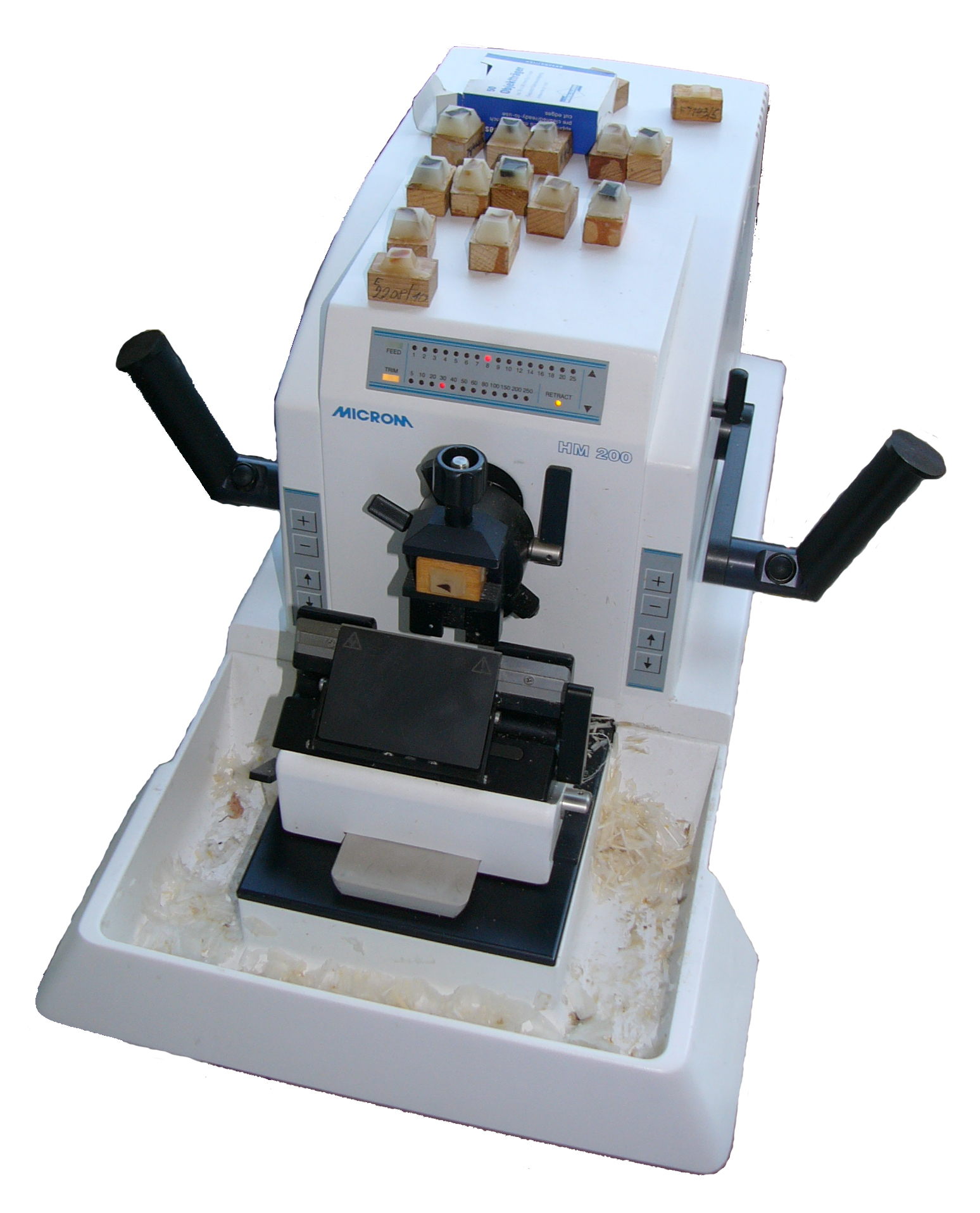WHAT ARE THE DIFFERENT TYPES OF MICROTOMES?

A microtome cuts very thin slices of specimen for microscopy. A single slice is known as a coupe, and it needs to be 1-7 µm thick if it is an animal tissue and 10-15 µm thick if it is a plant tissue. During histology, the tissue is molded in paraffin, while in very thin slices, a synthetic resin is used. The embedded tissue is mounted on a block of wood, stamp, or cassette and clamped to the microtome. A sharp and precise knife is then used to cut the tissue into thin slices. Here are the common types of microtomes.
Vibrating microtome
Many microtomes require hardening of the tissue by paraffin embedding or freezing. The reason being, if a blade, no matter how sharp, is pushed forward into a block of soft tissue, it compresses in front of it rather than cutting it cleanly. But when the user compresses it enough to push back, the blade cuts it, although it results in deflections because of uneven compression. However, it is possible to cut highly precise slices on soft tissue by moving the blade back and forth to create a vibrating effect—hence, a vibrating microtome. It leads to a sawing effect as the blade slowly advances.
Unlike a freezing microtome, a vibrating microtome does not fracture tissue membranes, the tissue may be oxygenated under medium to keep it alive when cutting, and the stains are sharper.
Freezing microtome
When using a freezing microtome, also known as a cryostat, the tissue requires some prepping beforehand. It doesn’t require a long dehydration period as with paraffin techniques. The frozen tissue is quickly cut with a glass knife. This freezing technique is beneficial because some surgical procedures require microscopic analysis results in the shortest time possible.
Rotational microtome
The circular motion used to turn the microtome’s handwheel is converted into a straight line motion that moves the tissue holder up and down with the tissue to be cut. Every movement cycle moves the tissue holder a preset distance closer to the knife, while in other instruments, the blade moves towards the tissue to be cut. Rotational microtomes are speedy, and by heating the paraffin when the paraffin block comes into contact with the knife, the sections adhere together. Therefore different coupes can be fitted in the same cover glass to analyze their relationship.
Ultramicrotome
This is used for making ultra-thin slices that are suitable for electron and light microscopy. The tissue is not poured into soft paraffin but rather a much harder synthetic resin, and then the coupes are sliced with a diamond or glass knife.
Sledge microtome
With a sledge microtome, it is not the object that moves like in the rotational microtome but the blade. That makes a sledge microtome ideal for cutting woody plant tissues.
Hand microtome
A hand microtome is especially suitable for plant tissues such as leaves, stems, and buds, which can be cut reasonably well with it. The only drawback is that regular and very thin cutting may not be possible; therefore, the specimen turns out to be unusable for certain protocols. However, hand microtomes come at relatively affordable prices compared to other varieties.
conclusion
A microtome enables scientists to achieve thin and precise sample slides for microscopy. When buying a microtome, select one that provides you with the ideal sectioning range of your application.



